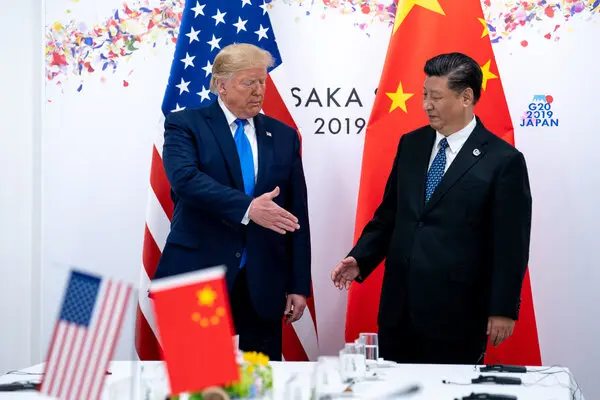In a dramatic escalation of U.S.–China trade tensions, President Donald Trump announced he will impose an additional 100% tariff on all goods from China, on top of the existing 30% duties, starting November 1 or sooner. The move effectively ends months of trade calm between the two economic giants and signals the most aggressive stance yet in the ongoing tariff dispute.
“The United States of America will impose a Tariff of 100% on China, over and above any Tariff that they are currently paying,” Trump said in a post on Truth Social Friday afternoon. “Also on November 1st, we will impose Export Controls on any and all critical software.”
Trump’s announcement comes in response to Beijing tightening export controls on rare earth elements — materials vital for manufacturing electronics, electric vehicles, and military equipment. The decision also appears to have derailed a planned meeting between Trump and Chinese President Xi Jinping later this month in South Korea.
Market Turmoil Follows Trump’s Tariff Threat
The markets reacted swiftly and negatively to Trump’s comments. Stocks tumbled on Friday, echoing the market chaos of earlier tariff hikes in the spring. The Dow Jones Industrial Average fell by 878 points (1.9%), the S&P 500 dropped 2.7%, and the Nasdaq Composite plunged 3.5% — reflecting investor fears that a renewed trade war could derail global growth.
This latest announcement revives memories of when tariffs on Chinese goods previously soared as high as 145%, effectively freezing trade. Trump later rolled back those measures for the tech industry, lowering tariffs on electronics to 20% in acknowledgment of the economic strain caused by the earlier hikes.
The World’s Two Largest Economies Are Deeply Intertwined
The United States and China remain the world’s largest and most interconnected economies. Although Mexico recently overtook China as the top supplier of goods to the U.S., America still relies heavily on Chinese imports — especially electronics, apparel, and furniture.
Trump has long urged CEOs, particularly in the tech sector, to bring production back to the United States. While some companies have responded with massive U.S. manufacturing investments, most continue to depend on China’s supply chains for large-scale production.
Earlier this year, both nations briefly eased tensions by lowering tariffs: China reduced levies on U.S. exports to 10% from 125%, while the U.S. cut tariffs on Chinese goods from 145% to 30%. The truce boosted confidence on both Wall Street and in Shanghai.
A Conflict Months in the Making
Although Trump claimed Friday that Chinese trade hostility “came out of nowhere,” frictions have been brewing for months. The U.S. has accused China of failing to deliver on promises to boost exports of rare earth magnets, while Beijing criticized Washington’s growing restrictions on technology sales.
Earlier this year, the Trump administration imposed limits on American tech exports — including Nvidia’s high-performance AI chips — before easing them under business pressure. Washington also introduced fees on Chinese-owned ships, to which Beijing responded with matching tariffs on American vessels.
The latest tariffs underscore the unpredictable nature of the U.S.–China relationship under Trump. His sweeping authority to raise tariffs could, however, face legal limits soon, as a Supreme Court case next month will determine whether presidents can continue to unilaterally impose such trade measures.
Xi Jinping, meanwhile, faces no such constraints, leaving both sides locked in a high-stakes economic showdown that could reshape global trade, technology, and geopolitics in the months ahead.






